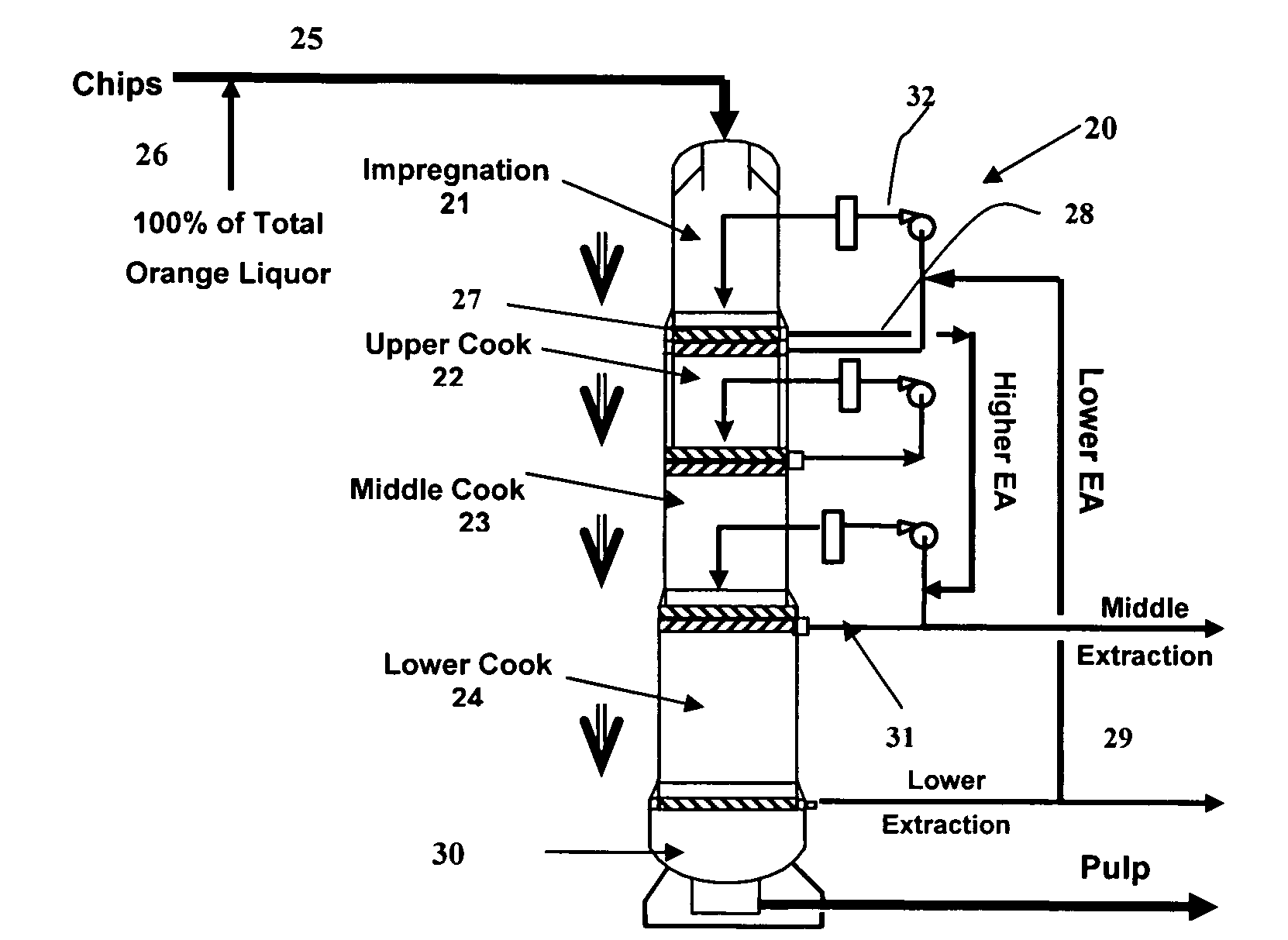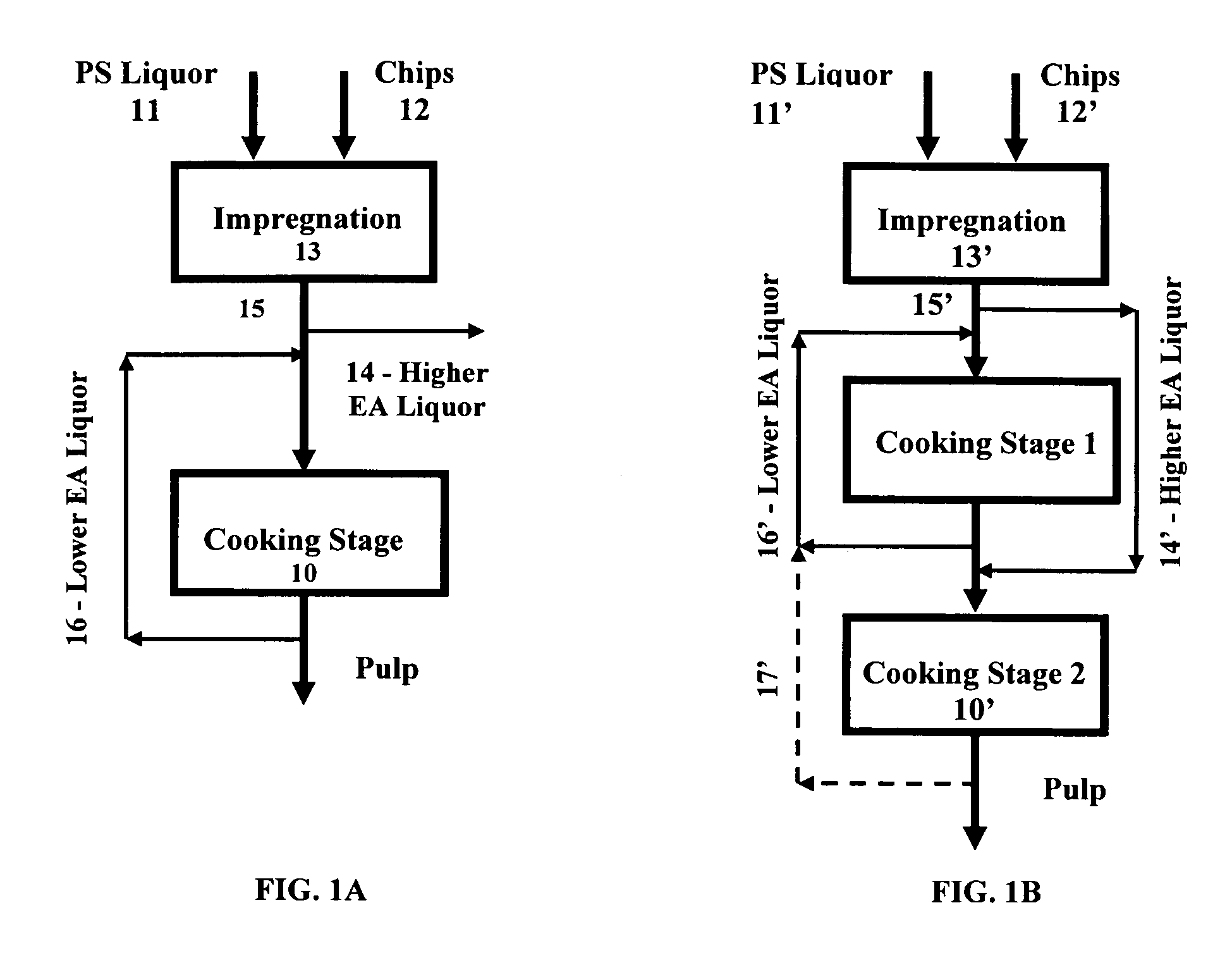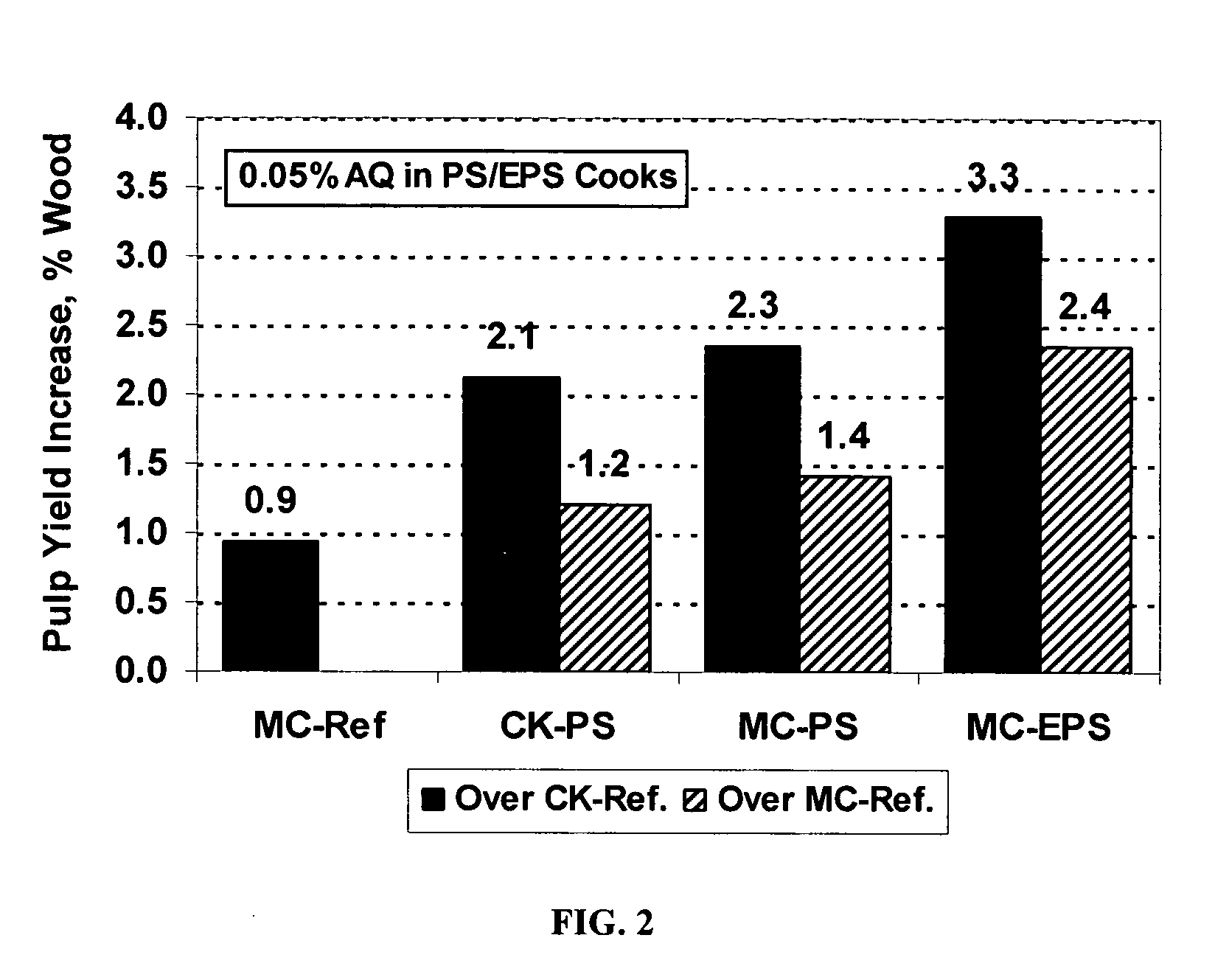Use of polysulfide in modified cooking
a technology of modified cooking and polysulfide, which is applied in the field of kraft pulping process, can solve the problems of excessive loss of pulping yield and pulp strength, rapid decomposition of polysulfide, and loss of effectiveness as a pulping yield enhancer
- Summary
- Abstract
- Description
- Claims
- Application Information
AI Technical Summary
Benefits of technology
Problems solved by technology
Method used
Image
Examples
example 1
[0023]Table 1 summarizes the pulping yields from cooking mixed southern US hardwood furnish to 15 Kappa number at the laboratory. These results are also depicted in FIG. 2.
[0024]CK-Ref denotes reference cooks of conventional Kraft cooking, which is comprised of: (a) heating up the chips with low-pressure steam at ˜100° C. (˜212° F.) for 10 minutes in a laboratory digester vessel equipped with external circulation and an electric heater; (b) draining off all free steam condensate; (c) adding all cooking alkali liquor (in form of white liquor with a sulfidity of ˜30% on active alkali (AA) basis), corresponding to EA / wood charge of 20.0% as NaOH (15.5% as Na2O) at the beginning of a cook, and bringing the cooking liquor / wood ratio to 3.5 by adding the proper amount of water to the cook; (d) heating up the cook from about 60° C. to 120° C. in 15 minutes; (e) maintaining the cook at 120° C. for 30 minutes to effect an impregnation stage; (f) heating up the cooking to full cooking tempera...
example 2
[0029]Similar results were found in laboratory pulping of southern pine, as summarized in Table 2 and depicted in FIG. 3. The cooking procedures were the same as those described in Example 1 for each type of cook.
[0030]Modified cooking (MC-Ref) to about 30 Kappa number was found to increase pulping yield by ˜0.5% on wood over conventional Kraft reference (CK-Ref) cooks. Adding 0.05% AQ and 0.7% PS to CK cooks increased the pulp yield by about 1.7% on wood. As expected based on teaching from the prior art, performing PS pulping with MC cooking without the use of the present invention, i.e., splitting the total alkali charge into multiple additions and only adding about 65% of total alkali charge to the beginning of a cook, the total pulp yield increase was only ˜1.5% over CK-Ref and 1.0% over MC-Ref, significantly lower than the expected sum of ˜2.2% (˜0.5% from modified cooking and 1.7% from PS addition). When applying the present invention using the enhanced PS process concept, the...
example 3
[0031]In another laboratory pulping study using a different southern pine furnish, but without adding AQ to any cooks, the results also clearly show the significant advantage of the present invention. The cooking procedures were the same as those described in Example 1 for each type of cook.
[0032]As can be seen in Table 3 and FIG. 4, adding the total required alkali charge in the form of PS liquor (containing 0.7% PS on wood) to the beginning of a cook (CK-PS) was found to increase the pulp yield by about 1.0% on wood. As expected based on teaching from the prior art, performing PS pulping with modified cooking without the use of the present invention, i.e., splitting the total PS liquor into multiple charges and only adding about 65% of total PS liquor to the beginning of a cook (MC-PS), the total pulp yield increase was only ˜0.6% over CK-Ref. When applying the present invention using the enhanced PS pulping concept with modified cooking (MC-EPS), the total pulp yield increase in ...
PUM
| Property | Measurement | Unit |
|---|---|---|
| Temperature | aaaaa | aaaaa |
| Temperature | aaaaa | aaaaa |
| Temperature | aaaaa | aaaaa |
Abstract
Description
Claims
Application Information
 Login to View More
Login to View More - R&D
- Intellectual Property
- Life Sciences
- Materials
- Tech Scout
- Unparalleled Data Quality
- Higher Quality Content
- 60% Fewer Hallucinations
Browse by: Latest US Patents, China's latest patents, Technical Efficacy Thesaurus, Application Domain, Technology Topic, Popular Technical Reports.
© 2025 PatSnap. All rights reserved.Legal|Privacy policy|Modern Slavery Act Transparency Statement|Sitemap|About US| Contact US: help@patsnap.com



